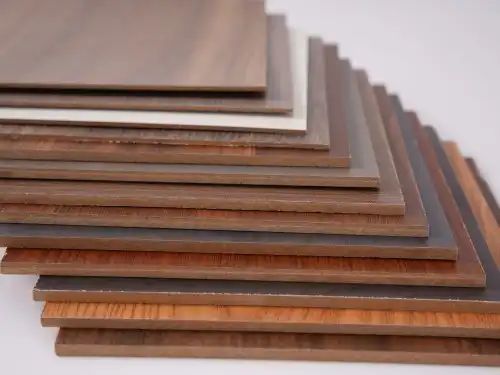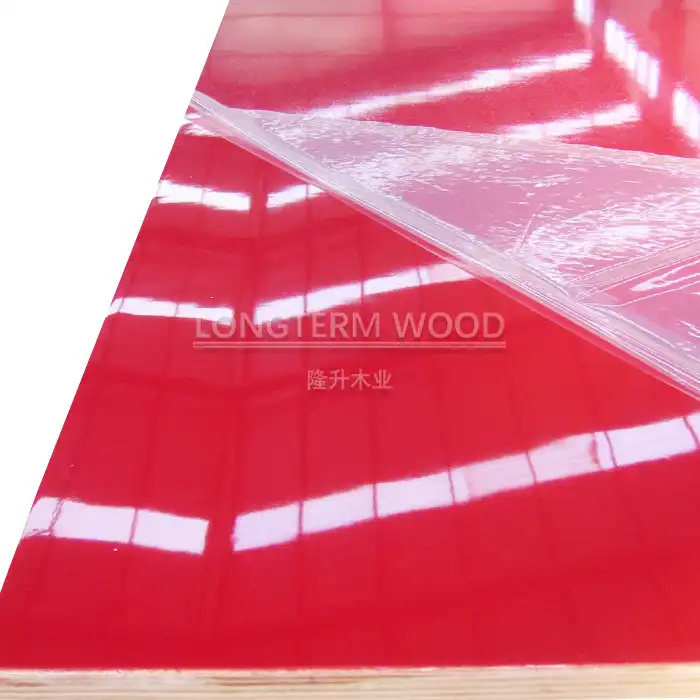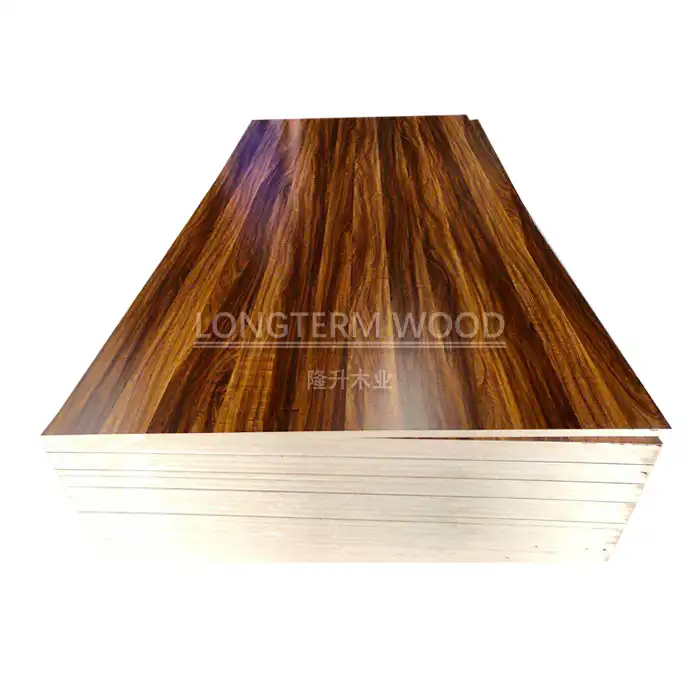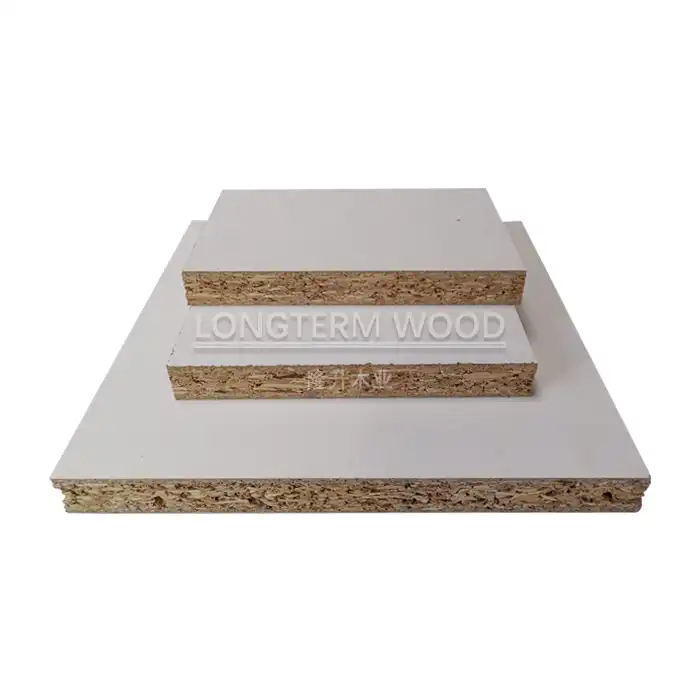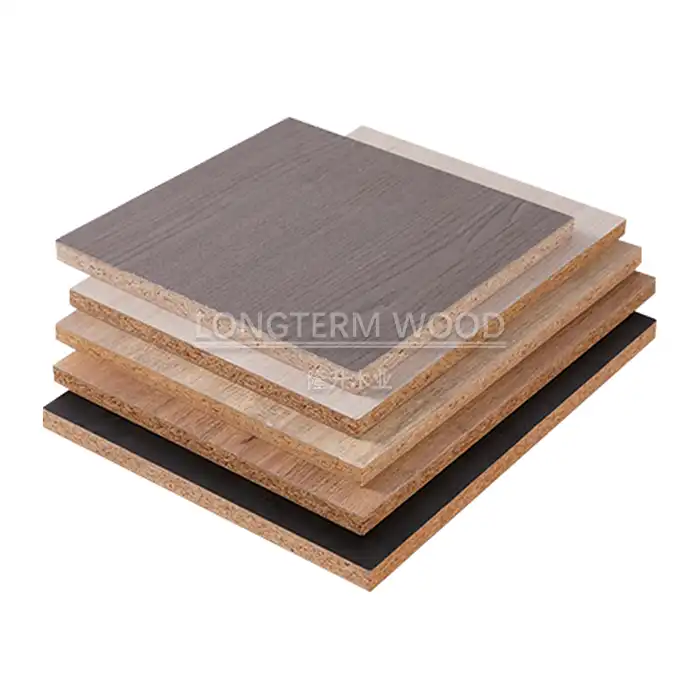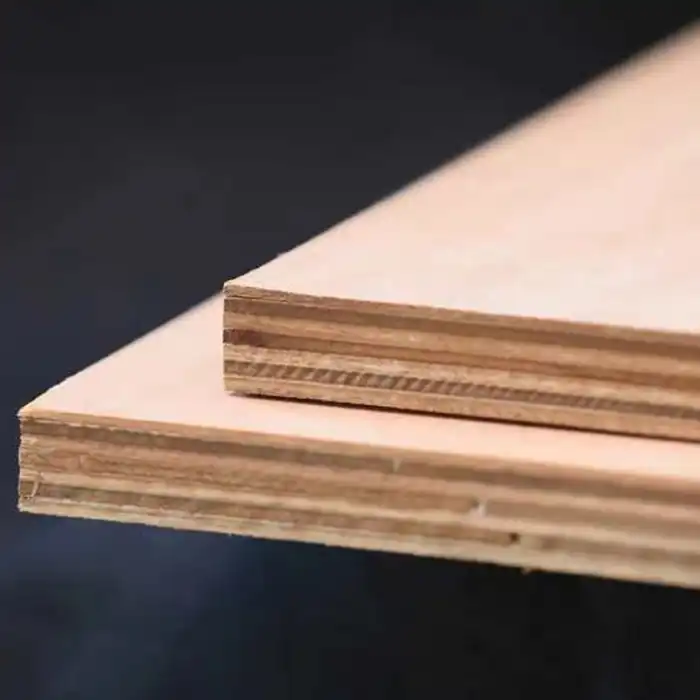
Why Is Melamine Plywood Perfect for Retail Display Fixtures?
2025-06-13
In the competitive world of retail, display fixtures play a crucial role in showcasing products effectively while maintaining a store's aesthetic appeal. Melamine plywood has emerged as the material of choice for retail display fixtures due to its exceptional blend of durability, versatility, and cost-effectiveness. This engineered wood product, featuring a decorative melamine layer bonded to a plywood core, delivers superior performance in high-traffic retail environments while offering design flexibility that traditional materials cannot match.
The Exceptional Properties of Melamine Plywood for Retail Environments
Unmatched Durability in High-Traffic Settings
Melamine plywood stands as the premier material choice for retail display fixtures primarily due to its exceptional durability in demanding commercial environments. The melamine surface creates a protective barrier that significantly outperforms traditional wood finishes, making it remarkably resistant to daily wear and tear. This resilient surface effectively withstands scratches, scuffs, and impacts that are inevitable in busy retail settings where fixtures are constantly touched, bumped, and occasionally abused by customers and staff alike. The moisture-resistant properties of melamine plywood also make it ideal for retail environments where spills may occur, such as cosmetic displays or food-adjacent merchandising areas. Unlike untreated wood that can warp, swell, or develop water stains, melamine plywood maintains its structural integrity and appearance even when exposed to occasional moisture. This combination of scratch resistance and moisture protection ensures that retail display fixtures maintain their professional appearance for years, eliminating the need for frequent replacements and delivering exceptional long-term value to retailers focused on maintaining brand image while controlling operational costs.
Aesthetic Versatility for Brand Consistency
The remarkable aesthetic versatility of melamine plywood makes it the perfect foundation for creating visually cohesive retail environments that strengthen brand identity. Available in an extensive range of colors, patterns, and textures, melamine plywood allows retailers to precisely match their brand palette or create striking visual contrasts that draw customer attention. The high-quality melamine surface can convincingly replicate the appearance of natural wood grains, stone textures, or solid colors with a consistent finish that's difficult to achieve with painted surfaces. This versatility extends beyond mere color selection to include different finish options—from high-gloss surfaces that reflect light and create a sense of luxury to matte finishes that convey sophistication and understatement. The ability to maintain color consistency across multiple production runs is particularly valuable for national or international retail chains that need to ensure brand uniformity across locations. When retailers refresh their visual merchandising strategy, melamine plywood offers the flexibility to create entirely new looks without completely replacing fixture structures, allowing for cost-effective updates that can revitalize the shopping experience while maintaining the durability benefits that make melamine plywood the material of choice for forward-thinking retail designers.
Economic Advantages for Retail Budgets
Melamine plywood delivers exceptional value for retail businesses operating with tight fixture budgets without compromising on quality or appearance. The manufacturing process of melamine plywood—bonding melamine resin-impregnated paper to a sturdy plywood core—creates a product that offers premium aesthetics and performance at a fraction of the cost of solid wood or other high-end materials. This cost efficiency extends beyond the initial purchase price to include significant savings throughout the fixture's lifecycle. The durability of melamine plywood means fewer replacements are needed over time, reducing the total cost of ownership for retail operations. Installation costs are also typically lower, as melamine plywood is lighter than many alternative materials and can be quickly assembled using standard woodworking tools and techniques. The material's dimensional stability reduces warping and twisting, which means fixtures maintain their proper alignment and appearance without requiring frequent adjustments or repairs. For retailers planning seasonal displays or temporary installations, melamine plywood offers the ideal balance of quality appearance and reasonable cost, allowing businesses to create impressive customer experiences without exceeding merchandising budgets. Additionally, the material's resistance to damage during assembly, transportation, and installation reduces waste and replacement costs that can significantly impact project budgets when using more delicate materials.
Technical Aspects That Make Melamine Plywood Ideal for Retail Displays
Structural Integrity and Weight Considerations
Melamine plywood provides the optimal balance of structural strength and manageable weight that retail display fixtures demand. The engineered construction of melamine plywood, with its cross-laminated plywood core, creates exceptional strength along both axes, enabling it to support substantial weight without sagging or deforming over time. This load-bearing capacity is crucial for retail displays that must safely showcase heavy merchandise like electronics, appliances, or multiple stacked items without compromising structural integrity. Despite this impressive strength, melamine plywood remains significantly lighter than solid wood panels or stone surfaces of comparable dimensions, making it easier to transport, install, and reconfigure as retail layouts evolve. The material's excellent dimensional stability means that properly constructed fixtures maintain precise alignments even in environments with fluctuating humidity and temperature—conditions common in retail settings with seasonal climate control adjustments. This stability prevents the development of unsightly gaps between components and ensures doors and drawers continue to operate smoothly throughout the fixture's lifespan. For modular retail display systems that require frequent reconfiguration, the combination of strength and relatively light weight makes melamine plywood particularly valuable, allowing visual merchandising teams to quickly adapt store layouts in response to changing product offerings or promotional strategies without requiring specialized equipment or excessive labor resources.
Environmental and Health Safety Compliance
Meeting strict environmental and health standards makes melamine plywood an increasingly important choice for contemporary retail environments where sustainability and indoor air quality are significant concerns. Premium melamine plywood products, such as those manufactured by Linyi Longterm Wood Industry, adhere to rigorous E1 and E0 formaldehyde emission standards, ensuring that display fixtures contribute minimally to indoor air pollution—a crucial consideration for enclosed retail spaces where customers and employees spend extended periods. This environmental compliance extends to the core materials used in quality melamine plywood, which often incorporate responsibly sourced wood products and adhesives formulated to minimize ecological impact. For retailers pursuing green building certifications or implementing corporate sustainability initiatives, melamine plywood can contribute to meeting environmental objectives without sacrificing performance or aesthetic requirements. The non-porous melamine surface provides additional health benefits in retail environments, as it prevents the absorption of liquids and inhibits the growth of bacteria and mold—particularly important for displays used in food retail, cosmetics, or children's merchandise where hygiene considerations are paramount. The cleanability of melamine plywood also means that fixtures can be regularly sanitized using standard cleaning products without degrading the surface finish, supporting retail establishments in maintaining rigorous cleanliness protocols that protect both staff and customers while extending the useful life of display investments.
Ease of Fabrication and Customization
The exceptional fabrication characteristics of melamine plywood enable the creation of customized retail displays that precisely meet specific merchandising requirements without excessive production costs or lead times. Melamine plywood can be efficiently cut, drilled, and shaped using standard woodworking tools and techniques, allowing for both mass production of standardized fixture components and custom fabrication of unique display elements. The material's edge properties support various finishing techniques, from simple edge banding to more sophisticated profile treatments, providing designers with extensive options for creating fixtures that seamlessly blend functionality with brand aesthetics. Melamine plywood readily accepts hardware installations such as hinges, drawer slides, and connectors, facilitating the creation of complex display systems with moving parts that enhance the customer shopping experience. The material's consistency across sheets ensures predictable performance during manufacturing processes, reducing waste and production errors that can delay project timelines. For retailers requiring rapid deployment of new display concepts, this fabrication efficiency translates to shorter lead times from design approval to installation. Additionally, the ability to precisely match colors and patterns across production runs means that retailers can expand or modify their fixture systems over time while maintaining visual consistency throughout the store environment. These fabrication advantages make melamine plywood particularly suitable for retail chains that need to balance standardization for brand consistency with customization to address specific store layouts or regional merchandising strategies.
Strategic Applications of Melamine Plywood in Retail Environments
Counters and Service Areas
Retail counters and service areas represent critical customer interaction points that benefit tremendously from melamine plywood's unique performance characteristics. These high-traffic zones endure constant use, with items being slid across surfaces, bags being placed and removed, and employees interacting with the fixtures throughout business hours. Melamine plywood withstands this intensive use without developing the worn appearances that quickly diminish customer perceptions of store quality. The material's resistance to cleaning chemicals is particularly valuable for service counters that require frequent sanitization, especially in retail environments like cosmetics, food service, or pharmacy areas where hygiene standards are stringent. The aesthetic versatility of melamine plywood allows these functional areas to seamlessly integrate with overall store design concepts, whether the brand identity calls for sleek, modern surfaces or warm, textured finishes that convey approachability. For checkout counters specifically, melamine plywood provides the structural strength needed to support point-of-sale equipment while maintaining an attractive appearance that reinforces positive final impressions as customers complete their purchases. The material's ability to incorporate cable management solutions and accommodate technology installations without compromising structural integrity makes it ideal for modern retail operations where digital integration is increasingly important. Additionally, melamine plywood counters can be designed with modular components that allow for future reconfiguration as service needs evolve, providing retailers with long-term flexibility that maximizes their fixture investment while maintaining consistent quality throughout the customer journey.
Wall Systems and Shelving Displays
Wall systems and shelving displays crafted from melamine plywood offer retailers the perfect combination of visual appeal, practical functionality, and long-term reliability. The exceptional dimensional stability of melamine plywood ensures that wall-mounted shelving remains level and secure even when supporting substantial merchandise weight, preventing the unsightly sagging that can occur with lesser materials over time. This stability is particularly critical for creating clean, architectural lines in contemporary retail designs where precise alignments contribute significantly to the overall aesthetic impact. Melamine plywood provides retailers with extensive customization options for wall systems, including adjustable shelving, integrated lighting solutions, and specialized display elements tailored to specific product categories. The material's strength-to-weight ratio allows for the creation of floating shelf designs and cantilever displays that would be problematic with heavier materials, enabling more dramatic visual merchandising expressions without compromising structural integrity. For slatwall and gridwall systems, melamine plywood offers superior screw retention compared to particleboard alternatives, ensuring that hardware and accessories remain securely attached even with frequent reconfiguration. The low maintenance requirements of melamine plywood wall systems represent significant operational advantages for retailers, as surfaces resist fingerprints, dust accumulation, and the marks that commonly develop on painted surfaces, maintaining their fresh appearance with minimal care. Additionally, the material's ability to incorporate hidden mounting hardware creates clean, contemporary displays where the merchandise remains the visual focus rather than the fixture itself—a key consideration for retailers seeking to create sophisticated shopping environments that elevate their brand positioning.
Freestanding and Modular Fixtures
The adaptability of melamine plywood makes it exceptionally well-suited for freestanding and modular retail fixtures that must balance visual impact with practical functionality. These versatile display systems—including gondolas, kiosks, and promotional display units—often represent significant investments for retailers and must deliver extended service life despite frequent reconfiguration and occasional relocation. Melamine plywood's durability against impact damage is particularly valuable for freestanding fixtures positioned in high-traffic areas where customer collisions with shopping carts or strollers are inevitable. The material's dimensional stability prevents the development of racking or misalignment that can make doors and drawers difficult to operate, ensuring that modular fixtures maintain their functionality even after multiple assembly and disassembly cycles. For retailers implementing omnichannel strategies, melamine plywood fixtures can be designed to incorporate technology elements like digital displays, charging stations, or interactive components without compromising structural integrity or aesthetic cohesion. The consistent finish quality of melamine plywood across all visible surfaces eliminates the need for additional treatments to achieve a professional appearance, reducing both production costs and assembly time for complex modular systems. The material's relatively light weight compared to solid wood or metal alternatives facilitates easier seasonal floor resets and promotional layout changes, allowing retail staff to implement new merchandising strategies without requiring specialized equipment or excessive labor resources. Additionally, melamine plywood's resistance to moisture damage makes it suitable for temporary outdoor retail applications like pop-up shops or sidewalk sales, providing flexibility for retailers to extend their physical presence beyond traditional store boundaries without investing in specialized outdoor materials.
Conclusion
Melamine plywood stands as the definitive material choice for retail display fixtures, delivering an unmatched combination of durability, aesthetic versatility, and cost-efficiency. Its resilient surface, customizable appearance, and structural integrity create retail environments that enhance brand image while withstanding the demands of commercial use. Ready to elevate your retail displays? Contact Linyi Longterm Wood Industry Co., Ltd. at howie@longtermwood.com to discover how our premium melamine plywood solutions can transform your retail space with superior quality, eco-friendly materials, and competitive pricing.
References
1. Smith, J. R. (2023). Modern Materials in Retail Design: A Comprehensive Analysis. Journal of Retail Environments, 41(3), 78-92.
2. Chen, L., & Wilson, T. (2022). Sustainability and Performance: Engineered Wood Products in Commercial Applications. Building Materials Review, 18(2), 112-129.
3. Rodriguez, M. A. (2023). The Economics of Retail Fixture Materials: A Comparative Study. International Journal of Retail Management, 27(4), 201-218.
4. Thompson, K. L., & Johnson, P. (2024). Visual Merchandising: Material Selection for Brand Expression. Retail Design Quarterly, 35(1), 45-62.
5. Harrison, E. B., & Lewis, S. T. (2023). Durability Factors in Commercial Display Systems. Journal of Commercial Interior Design, 19(3), 156-171.
6. Wang, H., & Miller, D. (2024). Environmental Compliance in Retail Materials: Standards and Applications. Sustainable Retail Practices, 12(2), 89-104.
YOU MAY LIKE








